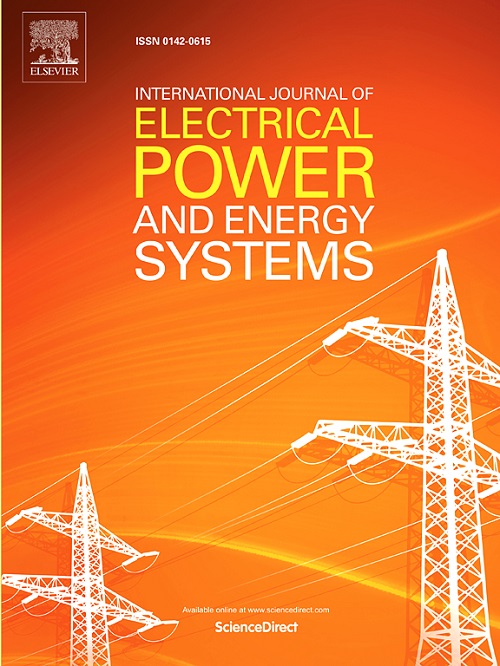有载分接开关关键参数在线测量技术研究
IF 5
2区 工程技术
Q1 ENGINEERING, ELECTRICAL & ELECTRONIC
International Journal of Electrical Power & Energy Systems
Pub Date : 2025-09-11
DOI:10.1016/j.ijepes.2025.111079
引用次数: 0
摘要
有载分接开关(OLTC)作为电力系统中广泛使用的电压调节装置,需要定期对其进行评估和维护,以确保其可靠运行,避免对电力系统造成不良影响。这些评估包括关键参数,如转换波形、转换时间、三相同步和转换电阻,以及机械结构的运行状态。然而,维护过程通常是离线进行的,会降低设备的效率。此外,一些参数测量的精度还有待提高。为了提高设备的可靠性,完善关键参数的检测方法,本研究探索了OLTC主体关键开关参数的在线检测技术。本文提出了一种以坐标变换为核心算法识别开关电路中这些关键参数的方法。我们使用特定的真空OLTC设备进行研究,进行理论分析,建立仿真模型验证所提出的OLTC开关参数识别方法,并进一步搭建测试平台验证算法的有效性。结果表明,仿真结果与实际测量结果非常吻合。每次开关过程间隔符合厂家对设备的设计规范,转换电阻参数计算精度约为95.39% ~ 100%。同样,抽头绕组电压计算精度约在91.52% ~ 100%之间,满足工程要求和企业标准[1]。该方法为OLTC设备工作参数的测量优化提供了依据,并为下一步样机的研制提供思路。本文章由计算机程序翻译,如有差异,请以英文原文为准。
Investigation into the online measurement technique for critical parameters of the on-load tap changer
The on-load tap changer (OLTC), widely used as a voltage regulation device in power systems, requires regular assessment and maintenance to ensure reliable operation and avoid adverse impacts on the power system. These assessments encompass key parameters such as transition waveform, transition time, three-phase synchronization, and transition resistor, along with the operational status of the mechanical structure. However, the maintenance process, typically conducted offline, can diminish equipment efficiency. Moreover, the accuracy of some parameter measurements needs improvement. To bolster equipment reliability and refine detection methods for critical parameters, this study explores online detection techniques for key switching parameters of the OLTC body. This paper proposes a method to identify these key parameters in the switching circuit, using coordinate transformation as the core algorithm. We used a specific vacuum OLTC device for our research, conducted theoretical analyses, developed a simulation model to validate the proposed method for identifying OLTC switching parameters, and further built a test platform to verify the algorithm’s effectiveness. The results show a close alignment between simulation and actual measurement outcomes. Each switching process interval conforms to the manufacturer’s design specifications for the equipment, with the transition resistor parameter calculation accuracy ranging from approximately 95.39% to 100%. Similarly, the tap winding voltage calculation accuracy is between approximately 91.52% and 100%, satisfying engineering requirements and enterprise standard [1]. This method provides a basis for optimizing the measurement of working parameters in OLTC equipment and aims to offer ideas for the next step of prototype development.
求助全文
通过发布文献求助,成功后即可免费获取论文全文。
去求助
来源期刊
CiteScore
12.10
自引率
17.30%
发文量
1022
审稿时长
51 days
期刊介绍:
The journal covers theoretical developments in electrical power and energy systems and their applications. The coverage embraces: generation and network planning; reliability; long and short term operation; expert systems; neural networks; object oriented systems; system control centres; database and information systems; stock and parameter estimation; system security and adequacy; network theory, modelling and computation; small and large system dynamics; dynamic model identification; on-line control including load and switching control; protection; distribution systems; energy economics; impact of non-conventional systems; and man-machine interfaces.
As well as original research papers, the journal publishes short contributions, book reviews and conference reports. All papers are peer-reviewed by at least two referees.

 求助内容:
求助内容: 应助结果提醒方式:
应助结果提醒方式:


